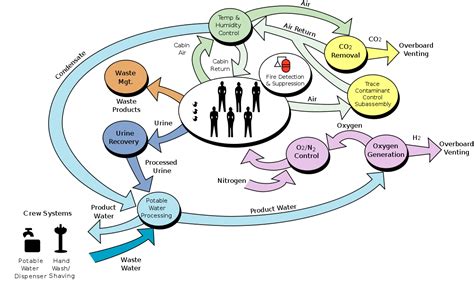Environmental law is a critical framework designed to protect our planet’s natural resources, ecosystems, and biodiversity. It encompasses a wide range of legal principles, regulations, and treaties aimed at addressing environmental challenges such as pollution, climate change, and habitat destruction. By establishing guidelines for sustainable practices and holding polluters accountable, environmental law plays a key role in promoting a healthy and balanced environment. This guide provides an essential overview of the foundational concepts of environmental law, including major regulations, the role of enforcement agencies, and the importance of public participation. As environmental concerns grow, understanding the basics of environmental law is more important than ever in shaping a sustainable future.
Join alijyun.com for a detailed examination of this topic.
1. Introduction to Environmental Law: Definition, purpose, and importance in safeguarding natural resources and ecosystems.
Environmental law comprises a set of legal frameworks aimed at controlling human activities that affect the environment. Its fundamental goal is to protect natural resources and ecosystems by establishing standards, regulating pollution, and promoting the sustainable use of resources. Environmental laws strive to prevent damage to the air, water, land, and biodiversity, encouraging practices that harmonize economic growth with the preservation of our natural world.
Environmental law plays a crucial role in safeguarding our planet by providing a legal framework for addressing environmental degradation, protecting endangered species, and promoting conservation efforts. This body of law establishes clear regulations for businesses, governments, and individuals, ensuring that environmental considerations are integrated into decision-making processes. Moreover, it offers mechanisms to hold polluters accountable and empowers communities to actively combat environmental injustices.
These laws establish clear rights and responsibilities related to the environment, safeguarding natural resources from overexploitation and mitigating the negative impacts of pollution, climate change, and habitat destruction. In doing so, environmental law is crucial for preserving ecological balance and creating a sustainable future for all life on Earth.

2. Key Principles of Environmental Law: Overview of core principles such as sustainability, precautionary principles, and polluter pays.
Environmental law is guided by several key principles aimed at safeguarding ecosystems and promoting responsible natural resource use. A central principle is sustainability, which emphasizes meeting current needs without jeopardizing the ability of future generations to meet their own. This principle stresses the importance of balancing environmental protection with economic and social advancements.
The precautionary principle is another cornerstone of environmental law. This principle promotes taking preventative measures when there is uncertainty surrounding the potential risks an activity or policy may pose to the environment. It emphasizes safeguarding the environment, even when scientific evidence is not conclusive.
The “polluter pays” principle mandates that those who cause environmental harm bear the financial responsibility for the consequences of their actions. This includes the costs of pollution cleanup and damage restoration. By requiring industries and individuals to internalize these environmental costs, this principle incentivizes sustainable practices and discourages harmful activities.
These principles work in concert to direct policy decisions, promoting a proactive and equitable approach to environmental stewardship. This framework aims to foster sustainable development and environmental justice through a comprehensive legal system.

3. Major Environmental Laws and Regulations: Examination of significant international, national, and regional environmental statutes and treaties.
Environmental protection is governed by a multi-layered system of laws and regulations, encompassing international, national, and regional frameworks. At the global level, treaties like the United Nations Framework Convention on Climate Change (UNFCCC) and the Paris Agreement play a crucial role in addressing climate change. These agreements establish targets for reducing greenhouse gas emissions and promote international collaboration in tackling this critical environmental issue.
The United States has established landmark legislation at the national level to safeguard environmental quality. The Clean Air Act and Clean Water Act, foundational laws aimed at reducing pollution, regulate emissions from industries and vehicles, set water quality standards, and limit pollutants to protect public health and the environment. Complementing these acts, the Endangered Species Act plays a crucial role in preserving biodiversity by safeguarding threatened and endangered species and their habitats.
At the regional level, the European Union has launched the European Green Deal, a comprehensive plan designed to achieve climate neutrality for Europe by 2050. This plan encompasses a wide range of directives and regulations focused on reducing pollution, safeguarding biodiversity, and promoting sustainable agricultural practices.
A multifaceted web of laws and treaties, upheld by their respective regulatory bodies, governs environmental protection across the globe. This network provides the legal framework for addressing a diverse range of environmental challenges, encompassing pollution control and climate action, ultimately ensuring that nations and regions participate in global sustainability initiatives.

4. Regulatory Bodies and Enforcement Agencies: Description of key organizations responsible for enforcing environmental laws and ensuring compliance.
Environmental laws and the protection of natural resources depend heavily on the work of regulatory bodies and enforcement agencies. These groups are crucial for ensuring compliance. On a global scale, organizations such as the United Nations Environment Programme (UNEP) take the lead in coordinating international efforts. They develop policies and provide guidance to promote environmental protection worldwide.
The Environmental Protection Agency (EPA) is the main federal agency in the United States tasked with enforcing national environmental laws. The EPA’s responsibilities encompass regulating air and water quality, managing hazardous waste, and ensuring industries adhere to environmental standards. Other agencies, like the U.S. Fish and Wildlife Service, play a role in enforcing specific laws, such as the Endangered Species Act.
The European Environment Agency (EEA) in Europe oversees the implementation of environmental policies across its member states. This includes ensuring compliance with the European Green Deal and other regional regulations.
These organizations, in conjunction with regional and local enforcement agencies, work to guarantee the consistent and effective application of environmental regulations. Their responsibilities include investigating violations, implementing corrective measures, and holding individuals and industries accountable, thereby contributing to the prevention of environmental harm and the promotion of sustainability.
5. Common Areas of Environmental Law: Focus on pollution control, conservation, climate change, biodiversity, and waste management.
Environmental law encompasses a range of areas, each tackling particular threats to the environment. Pollution control stands as a central focus, with laws governing the contamination of air, water, and soil. These laws aim to curb emissions and discharges from industries and vehicles, thereby mitigating the adverse effects of pollutants on human health and the natural world.
Conservation laws safeguard natural resources, such as forests, wildlife, and marine ecosystems, by creating protected zones and regulating the removal of resources.
Climate change is another crucial area, with international and national laws aimed at decreasing greenhouse gas emissions and fostering the use of renewable energy sources. Treaties like the Paris Agreement promote global collaboration in mitigating the effects of climate change.
Protecting biodiversity is crucial for preserving ecological balance. Laws focus on safeguarding endangered species and their habitats.
Waste management laws govern the collection, processing, and elimination of solid and hazardous waste. They encourage recycling and environmentally sound waste management practices to mitigate environmental damage. These laws form the foundation of environmental legal initiatives.
6. Role of Environmental Impact Assessments (EIAs): Explanation of how EIAs help in decision-making and mitigating negative environmental impacts.
Environmental Impact Assessments (EIAs) play a crucial role in guiding decisions about projects that could potentially impact the environment. By systematically examining the potential environmental effects of a proposed project, EIAs provide stakeholders with a clear understanding of the potential consequences before any action is taken. This proactive approach ensures that environmental considerations are seamlessly integrated into the planning and development of projects, minimizing unforeseen environmental impacts.
Environmental Impact Assessments (EIAs) are a crucial tool for evaluating the potential consequences of development projects. They delve into the potential effects on air and water quality, the diversity of life, and the health of local ecosystems. Through careful identification and analysis of these impacts, EIAs empower decision-makers to consider alternative approaches, adjust project designs, and implement measures to lessen any negative consequences. For example, if a proposed development poses a threat to the habitat of an endangered species, the EIA might recommend modifications to the project or propose alternative locations that minimize ecological disruption.
Furthermore, EIAs encourage transparency and public involvement by integrating communities into the assessment process. This engagement cultivates a sense of ownership and responsibility, allowing local stakeholders to express their concerns and actively contribute to shaping project results.
In essence, EIAs play a crucial role in harmonizing economic growth with environmental preservation. By facilitating responsible and sustainable project execution, they effectively mitigate the negative consequences on both the environment and local populations.
7. Public Participation and Environmental Justice: Importance of community involvement and equitable access to environmental benefits and protections.
Public participation is a cornerstone of environmental law, highlighting the critical role of community involvement in decisions affecting their surroundings. By engaging local communities, environmental governance promotes transparency and accountability by incorporating a range of viewpoints. This participation empowers citizens to express their concerns, share valuable local knowledge, and actively contribute to the creation of effective environmental policies.
Environmental justice is deeply intertwined with public participation, striving for equitable access to environmental benefits and protections for all. Historically, marginalized communities have disproportionately borne the brunt of environmental burdens, including exposure to pollution and limited access to clean resources. By championing inclusive decision-making processes, environmental justice aims to redress these inequalities, guaranteeing that all communities, irrespective of their socioeconomic status, have a meaningful voice in environmental matters.
Public input is essential for both the legitimacy and sustainability of environmental decisions. Engaging communities empowers them to advocate for their rights and ensures their needs are met. By fostering public participation and advancing environmental justice, we build a more equitable and sustainable future where everyone benefits from a healthy environment.
8. Future Trends and Challenges in Environmental Law: Analysis of emerging issues like climate litigation, carbon markets, and adapting to evolving environmental challenges.
With environmental challenges growing ever more complex, emerging trends and issues are shaping the future of environmental law. Climate litigation is gaining momentum, as individuals and organizations file lawsuits against governments and corporations for failing to fulfill their climate commitments or contributing to environmental harm. These legal actions underscore the increasing awareness of the right to a healthy environment and the necessity for accountability in tackling climate change.
Carbon markets are a burgeoning trend as nations and entities explore innovative solutions for reducing greenhouse gas emissions. These markets facilitate the exchange of carbon credits, thereby encouraging emissions reductions and fostering sustainable practices. However, robust regulation is paramount to maintain transparency and guard against exploitation.
To address evolving environmental challenges like biodiversity loss and resource depletion, legal frameworks must be flexible enough to adapt to new scientific discoveries and societal demands. Integrating technology and data-driven approaches into environmental law is vital for effective monitoring and enforcement. As these trends continue to evolve, the legal landscape must adapt to ensure strong environmental protections and promote sustainable development for future generations.
In conclusion, understanding environmental law is vital for protecting natural resources and promoting sustainability. By grasping its core principles, major regulations, and emerging challenges, individuals and communities can advocate for equitable environmental policies. Continued public participation and innovative legal frameworks will be essential in addressing the pressing environmental issues of our time, ensuring a healthier planet for future generations.
alijyun.com

